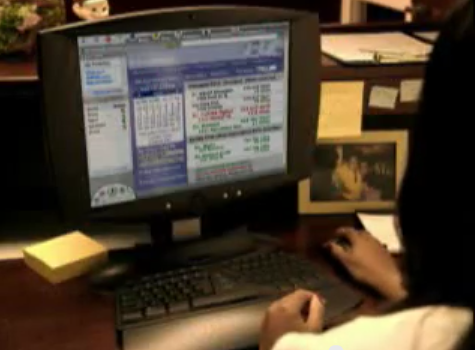Ballmer’s .NET visions. They’ve taken 13 years, but we’re living them today

Way back when, in the spring of 2000, was Microsoft’s Forum 2000 event where it unveiled .NET and where it showed its vision for the future of computing in a series of videos.
Those videos are the thing most people remember from the event, classic examples of what Bruce Sterling calls "design fictions", stories designed to inspire and direct development.

So perhaps it wasn’t surprising to read a recent article that stated Microsoft hadn't delivered on the promise of the videos. Except the videos weren’t a promise; they were a what-if, a "look what we could build", videos that set the scene for a vision of a very different world of computing from the client-servers that powered business and the early internet.
Steve Ballmer: The Exit Interview
Thirteen years into that future and it's clear that, while not every detail has arrived just the way the videos depicted, we are living in that world. We're using service-oriented architectures to connect disparate business and technologies, without having to worry about whether one is Java, if one is .NET, if one is a PHP web app. We’re storing our lives in cloud services, using them to mediate our records, our connections, the very devices we use.
People often think of Microsoft as wedded to the vision of the PC on the desk, but it's clear from those vision videos that the Microsoft of 2000 was already a very "post-PC" organisation, with a view of the future that was focused on cloud services and mobility. Sure, there have been missteps on the way.
We should also remember what Microsoft Research’s Bill Buxton calls the "Long Nose" of technology — the 10 years and more that it takes to leave the research lab and get into the hands of the consumer. It's an effect I have personal experience of, working in a research lab in the early 90s and experimenting with early versions of cable modems, of ADSL networks, and of pocket sized screens and small radios. At the bleeding edge then, they're in most homes today — costing a fraction of the thousands of dollars my experimental networks cost to build.
And so, we should look at the technologies we have today, where iPhones with biosensors unlock information in the cloud, where a Windows 8.1 PC shares apps with the rest of the machines you own, and where the same code runs on the desktop, on the phone, and in the cloud. Watch the videos again, and you’ll see much of the technology landscape we live in. it may not all be here yet, and it certainly won't look it does in the video, but that Forum 2000 vision (like Apple’s Knowledge Navigator before it) is part of the foundations of today’s IT world.
Sure, there's still work to be done. But the world we live in is a different one from that spring day. There's a joke about a man in a car, lost somewhere rural. He sees a farmer in a field, and stops his car to ask how to get to his destination. "Do you know the way?" he says. "Of course," replies the farmer, "But I wouldn't start from here."
Looking at those videos now, and it's clear we've ended up somewhere different, and if we were to build them today we wouldn't be starting where they started. But we have most of what they talked about, and an infrastructure that would build the rest — if they were what we actually wanted now. We have a world where pocket computing devices link us into global communities, where we can pick up new hardware and in minutes get access to our applications and data, where we can control who can see what about us, where electronic records and open APIs have enabled new workflows, new ways of information sharing.
Back in 2000, we'd have looked at what we have today, where we treat smartphones as cognitive prostheses, and where we live lives as much on as offline, as a design fiction.
If someone had made a scenario video of our daily lives, we'd have probably giggled a bit, and then gone off to try and build the bits we thought were cool — and ended up building something that had some of those ideas at its core, but was actually more useful. That’s what Microsoft’s engineers did with those videos — and not just Microsoft’s, engineers who left and went elsewhere, and engineers at other companies.
And because they did, the videos didn't fail. They succeeded, making all our lives better.